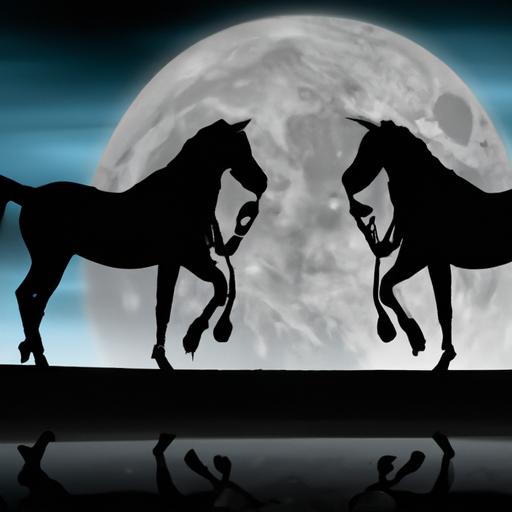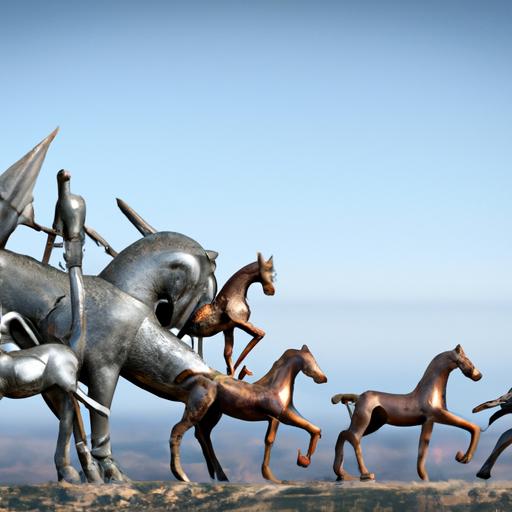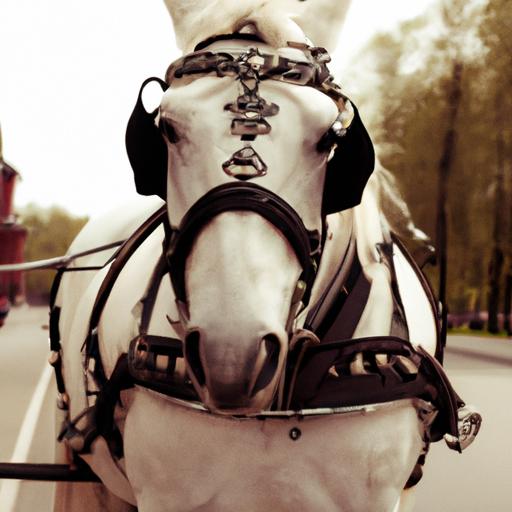Unveiling the untold tales of light horse history: from World War I to modern military operations. Explore their vital role in shaping warfare.
Introduction
Have you ever wondered about the unsung heroes of history, the ones who galloped with grace and bravery, shaping the course of civilizations? Today, we embark on a captivating journey through time to unravel the captivating tale of light horses. These remarkable equine creatures have played a pivotal role in shaping the world as we know it. So, let’s saddle up and explore the importance of light horses in history.
Defining Light Horses and their Role
Light horses, often referred to as “war horses,” are magnificent creatures bred specifically for swiftness, agility, and endurance. They have been an inseparable part of ancient civilizations, medieval warfare, and even modern military operations. These remarkable steeds have served as loyal companions, enabling humans to triumph in battle, explore uncharted territories, and forge new frontiers.
Throughout history, light horses have been instrumental in various civilizations. In ancient times, they played a crucial role in Mesopotamia, where the Assyrians utilized their speed and mobility to dominate the battlefield. The Persians, renowned for their cavalry, rode light horses with unmatched skill and precision. These equine warriors were pivotal in the success of Greek horsemen, who utilized their maneuverability for strategic advantage.
The role of light horses expanded during medieval times, where they became an integral part of warfare. Knightly orders such as the Knights Templar and the Hospitallers relied heavily on their light horsemen to charge into battle, delivering swift strikes with unwavering bravery. Their tactical significance reshaped the outcomes of many medieval battles, often turning the tide in favor of those who employed these remarkable steeds.
As we delve deeper into the annals of history, we’ll uncover the remarkable contributions of light horses in the age of exploration, their role in modern warfare, and the ongoing interest in preserving their legacy. Join me in the next section as we embark on a thrilling adventure through the early history of light horses.
Early History of Light Horses

Ancient Civilizations and their Use of Light Horses
Throughout the annals of time, ancient civilizations recognized the immense value of light horses on the battlefield. These remarkable equine companions paved the way for conquest and dominance, forever etching their mark in the pages of history.
1. Mesopotamia and the Assyrians
In the cradle of civilization, Mesopotamia, the Assyrians stood at the forefront of military innovation. They harnessed the speed and agility of light horses to unleash devastating charges upon their enemies. The Assyrians’ mastery of mounted warfare not only secured their empire but also influenced future civilizations in the art of cavalry tactics.
2. Persians and their Renowned Cavalry
The Persians, known for their grandeur and military might, boasted a formidable cavalry that struck fear into the hearts of their adversaries. Mounted upon light horses, these Persian warriors possessed unparalleled skill in archery and swift maneuverability. Their cavalry played a vital role in conquering vast territories and establishing one of the greatest empires in history.
3. Greeks and their Horsemen
The Greeks, celebrated for their intellectual and cultural achievements, also recognized the strategic importance of light horses in warfare. Greek horsemen, known as hippeis, embodied the agility and dexterity of their steeds. They epitomized the symbiotic relationship between horse and rider, utilizing their speed and maneuverability to outmaneuver foes on the battlefield.
Evolution of Light Horse Tactics and Equipment
As civilizations evolved, so too did the tactics and equipment used in conjunction with light horses. The early history of light horses witnessed a constant refinement of strategies and advancements in equipment to maximize their effectiveness in battle.
From the use of chariots and horse archers in ancient times to the development of saddles, stirrups, and advanced weaponry, the evolution of light horse tactics and equipment revolutionized warfare. These innovations allowed riders to maintain balance and stability, deliver precise strikes, and ultimately gain a significant advantage over their opponents.
As we embark on this historical odyssey, we will delve further into the medieval era, where light horses continued to shape the course of battles and witness the rise of knightly orders. Join me in the next section as we uncover the pivotal role of light horses in medieval times.
Light Horses in Medieval Times

Role of Light Horses in Medieval Warfare
In the medieval era, light horses emerged as indispensable assets on the battlefield. Their agility and speed made them formidable allies, capable of swiftly maneuvering through the chaos of combat. Light horses played a vital role in scouting, reconnaissance, and delivering crucial messages across the battlefield. Their ability to cover long distances in a short time gave armies a strategic advantage, enabling them to gather intelligence and respond swiftly to changing circumstances.
Notable Knightly Orders and their Use of Light Horses
Among the prominent knightly orders of the medieval period, the Knights Templar and the Hospitallers stood out for their exceptional use of light horses.
1. Knights Templar and Their Mounted Troops
The Knights Templar, renowned for their unwavering dedication to the crusades, recognized the immense value of light horses in their military endeavors. Mounted on these swift steeds, the Templars charged fearlessly into battle, clad in their iconic white mantles adorned with the red cross. Their light horsemen proved instrumental in executing tactical maneuvers and launching surprise attacks, often turning the tide of battles in their favor.
2. Hospitallers and Their Light Horsemen
Similarly, the Hospitallers, also known as the Knights of St. John, embraced the prowess of light horses. These noble warriors, driven by their commitment to defending the Holy Land, relied on their light horsemen to swiftly engage the enemy, providing support and reinforcement to their comrades. The Hospitallers’ skilled use of light horses enhanced their effectiveness on the battlefield and solidified their reputation as formidable defenders.
Influence of Light Horses on Medieval Battles
The presence of light horses in medieval battles had a profound impact on the outcomes of these conflicts. Their speed and maneuverability allowed armies to swiftly respond to changing situations, exploiting weaknesses in the enemy’s formation. The ability to strike quickly and retreat rapidly granted armies a tactical advantage, often catching their adversaries off guard. The influence of light horses on medieval battles cannot be overstated, as they were instrumental in shaping the strategies and tactics employed during this era.
Join me in the next section as we unveil the extraordinary contributions of light horses in the age of exploration, where their role expanded beyond the battlefield into uncharted territories.
Light Horse Contributions in the Age of Exploration
Role of Light Horses in Exploration and Colonization
In the vast realm of exploration and colonization, light horses emerged as indispensable allies, aiding intrepid explorers in their quest to discover new lands and expand their empires. These swift and adaptable creatures played a crucial role in conquering uncharted territories, navigating harsh terrains, and establishing colonies across the globe.
Light horses, with their agility and endurance, were well-suited for the challenges posed by the diverse landscapes encountered during these expeditions. Whether it was traversing dense forests, crossing vast deserts, or ascending treacherous mountain ranges, these equine companions proved to be invaluable assets, ensuring the success of exploratory missions.
Famous Explorers and their Reliance on Light Horses
-
Conquistadors and the Use of Light Horses in the New World
When Spanish conquistadors embarked on their daring expeditions to the New World, they heavily relied on light horses to conquer vast territories and subdue indigenous populations. The arrival of these mounted warriors, clad in armor and wielding swords, struck fear into the hearts of those who stood in their path. The speed and mobility of their light horses allowed them to swiftly maneuver through unfamiliar terrain, granting them a significant advantage over their adversaries.
The conquests of Hernán Cortés in Mexico and Francisco Pizarro in Peru are prime examples of the pivotal role light horses played in the downfall of powerful empires. These conquistadors, armed with their trusty steeds, toppled established civilizations, forever altering the course of history.
-
Lewis and Clark Expedition and their Reliance on Light Horses
Moving forward in time, the Lewis and Clark expedition, often regarded as one of the greatest exploratory missions in American history, heavily relied on light horses. As they embarked on their arduous journey to map the uncharted western territories of the United States, Meriwether Lewis and William Clark recognized the significance of light horses for transportation, carrying supplies, and navigating rugged terrains.
The light horses accompanied the expedition members through dense forests, across swift rivers, and over towering mountain ranges, enabling them to traverse vast distances with relative ease. These steadfast companions were essential for the success of the expedition, ensuring the safe passage of the explorers and opening up new frontiers for future settlers.
As we unfold the chapters of light horse history, we witness their unwavering contribution to the age of exploration. In the next section, we will delve into the role of light horses in modern warfare and their continued significance on the battlefield.
Conclusion
Throughout the ages, light horses have been the unsung heroes of history, silently shaping the course of civilizations. From their early beginnings in ancient times to their notable role in medieval warfare, these remarkable equine creatures have left an indelible mark on human history.
In our journey, we discovered the pivotal role of light horses in ancient civilizations such as Mesopotamia, where the Assyrians utilized their speed and agility to conquer their enemies. The Persians and Greeks also recognized the strategic advantage of light horses, employing them in battle with unparalleled skill.
Moving forward to medieval times, we witnessed the knightly orders harnessing the power of light horses to charge fearlessly into battle. The Knights Templar and the Hospitallers relied on their light horsemen to execute swift and decisive strikes, forever altering the outcomes of many conflicts.
As we ventured into modern warfare, we witnessed the utilization of light horses in World War I, where they provided crucial support and transport for troops. During World War II, light horses continued to serve in cavalry units, playing a vital role in reconnaissance, communication, and swift maneuvers.
Remarkably, light horses continue to be used in modern military operations. Their endurance, agility, and ability to navigate difficult terrains make them invaluable assets in various missions around the world.
In conclusion, the history of light horses is a testament to their exceptional abilities and unwavering loyalty. These noble creatures have ridden alongside us, fought beside us, and explored new frontiers with us. As we cherish the legacy of light horses, let us also remember the ongoing interest in preserving their history and ensuring their recognition as the true heroes they are.
Thank you for joining me on this captivating journey through the realms of light horse history. To explore more intriguing topics related to our equine companions, visit Horsemasterypro.com – where passion and expertise meet in the world of horsemanship. Let us continue to celebrate the remarkable bond between humans and horses as we delve into the depths of their fascinating stories.


